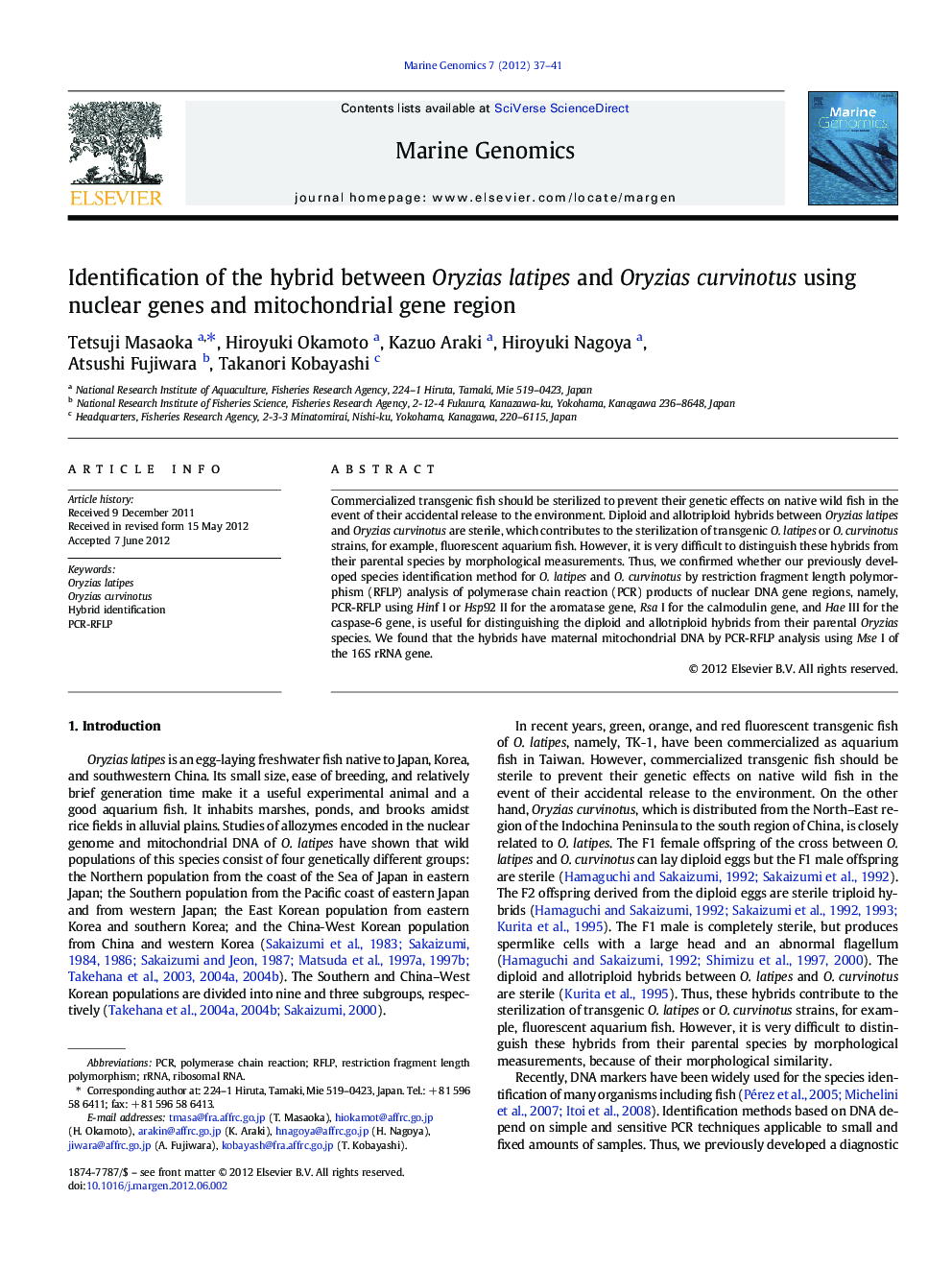| Article ID | Journal | Published Year | Pages | File Type |
|---|---|---|---|---|
| 2058223 | Marine Genomics | 2012 | 5 Pages |
Commercialized transgenic fish should be sterilized to prevent their genetic effects on native wild fish in the event of their accidental release to the environment. Diploid and allotriploid hybrids between Oryzias latipes and Oryzias curvinotus are sterile, which contributes to the sterilization of transgenic O. latipes or O. curvinotus strains, for example, fluorescent aquarium fish. However, it is very difficult to distinguish these hybrids from their parental species by morphological measurements. Thus, we confirmed whether our previously developed species identification method for O. latipes and O. curvinotus by restriction fragment length polymorphism (RFLP) analysis of polymerase chain reaction (PCR) products of nuclear DNA gene regions, namely, PCR-RFLP using Hinf I or Hsp92 II for the aromatase gene, Rsa I for the calmodulin gene, and Hae III for the caspase-6 gene, is useful for distinguishing the diploid and allotriploid hybrids from their parental Oryzias species. We found that the hybrids have maternal mitochondrial DNA by PCR-RFLP analysis using Mse I of the 16S rRNA gene.
► We developed species identification method for Oryzias latipes and O. curvinotus. ► The method enables identification of hybrids of the two Oryzias species. ► The method contribute to the monitoring of gene flow of the two Oryzias species.
